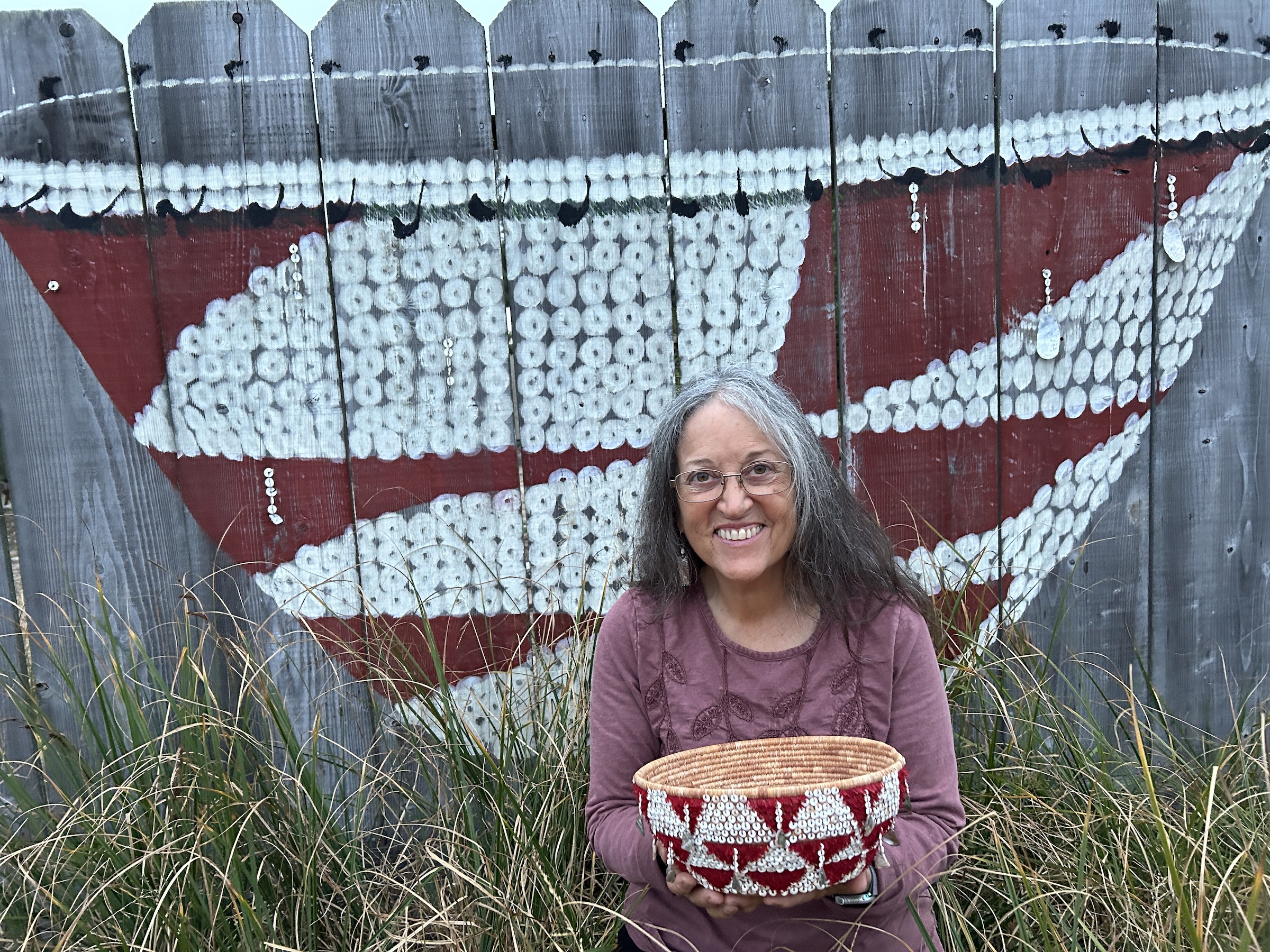For most of her early life, Linda Yamane thought Ohlone fine coil basketry had disappeared from the world. But when she was a Master’s student at San Jose State University, she saw a poster displaying Ohlone baskets and lists of which institutions held them. Four decades later, Yamane says, she is one of the only people practicing Ohlone coil basketry aside from her one apprentice.
Yamane, who lives in Seaside, California, is a member of the Rumsen Ohlone Tribal Community, indigenous to the Monterey Bay, Carmel River Valley, and Point Lobos area in Northern California. Ohlone refers to a linguistic association of Northern California Indigenous peoples who share languages belonging to the Penutian family. Rumsen is one of eight linguistic communities under the Ohlone umbrella.
Now a master Ohlone basket weaver, Yamane taught herself the intricate and nearly extinct craft over 100 years after the last Rumsen basketmakers died.

After beginning her research on the roughly two dozen remaining Ohlone baskets, Yamane said started visiting them. One, she said, was at the American Museum of Natural History in New York. Others she studied at the British Museum in London and the Musée du Quai Branly in Paris.
“There were a lot of technical innuendos and details that I needed to try to figure out,” Yamane said.
The process relied not only on studying the physical objects but also on the harvesting of the willow and sedge plants used to make them.
“We rely upon the land and the health of the land, which really could be threatened by climate change,” Yamane said.
“It is important to bring the baskets back into the world, back into our community, not only to have them as tangible proof of our culture for people in our community,” she added, “but also to put them into use, to have them not be rare.”
Yamane said she’s now doubled the number of existing Ohlone baskets in the world.

Yamane described the technique of coiled weaving she learned as labor-intensive, “fancy,” and “fine work.” These baskets require thousands of stitches. Yamane remembers that one of her baskets, commissioned by the Oakland Museum of California, required about 20,000 stitches, 1,200 handcrafted beads, and thousands of feathers. Her basket was completed in a ceremonial style that hadn’t been made in 250 years.
“Coiled baskets start out with a tiny, tight coil of material in the center, and you poke a hole with an awl, and you push your weaving material through, and you pull the stitch through. And then you do that over and over again,” Yamane said.
Around the same time as beginning basketry, Yamane also discovered source materials for the Rumsen language, which she used to create a dictionary she now shares with individual community members, 85 years after the last fluent Rumsen speaker died. She is working on an updated version, which she plans to share with the community at large.
For the next year or so, Yamane will also work on a basket commissioned by the de Young Museum in San Francisco.

For her next artistic project, Yamane wants to depict the ancestral villages of Achista, Tucutnut, Ishxenta, Echilat, and Shokronta.
“I want to reconstruct our five Rumsen villages and reconstruct them with our people as life was before the missions came,” Yamane said.
“Aside from my family, art is the focus. It is my life. It is what I do, what I think about, what I am focused on and trying to accomplish,” Yamane concluded.
Through early September, photographs of Yamane alongside her baskets were placed on certain bus stops along Market Street in San Francisco as part of photographer Kirti Bassendine’s We Are Still Here public art exhibition.
“Obviously, we live as modern Americans, but we have a foot in both worlds — one in the past, the other in the present,” Yamane said of her participation in the series. “We are constantly integrating aspects of our Indigenous culture into everyday life, to honor our ancestors and to keep our cultures alive for the next generations.”

